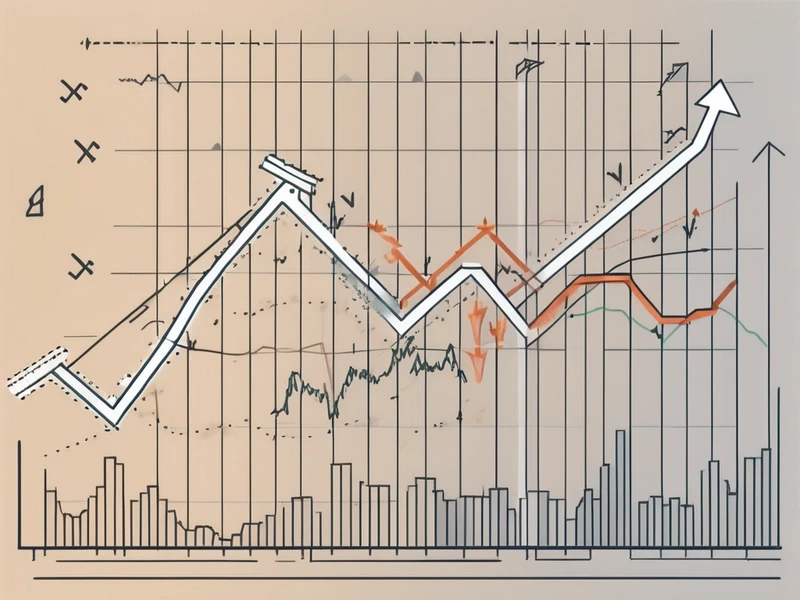Stock market volatility is an inevitable part of investing. Whether you're a seasoned investor or just starting out, understanding how stock market volatility impacts your portfolio is crucial to making informed decisions. Volatility can create both risks and opportunities, and how you respond to it can determine your long-term success. In this article, we’ll explore the causes of market volatility, its effects on your investments, and strategies to manage risk and protect your portfolio.
What Causes Stock Market Volatility?
Stock market volatility refers to the rapid and significant price fluctuations of stocks or the market as a whole. These fluctuations can be caused by a variety of factors, including:
- Economic Data: Reports on employment, inflation, GDP growth, and other economic indicators can influence investor sentiment and trigger market movements.
- Geopolitical Events: Elections, trade disputes, wars, and other global events can create uncertainty and lead to market swings.
- Corporate Earnings: Earnings reports from major companies can cause significant price movements, especially if results exceed or fall short of expectations.
- Interest Rates: Changes in interest rates, as determined by central banks, can impact borrowing costs, corporate profits, and investor behavior.
- Market Sentiment: Fear and greed often drive short-term market movements, leading to overreactions and price swings.
Understanding these factors can help you anticipate potential volatility and make more informed decisions about your investments.
How Volatility Affects Your Portfolio
Volatility can have both positive and negative effects on your portfolio, depending on your investment strategy and risk tolerance. Here’s how it can impact you:
- Short-Term Losses: During periods of high volatility, stock prices can drop significantly in a short amount of time. This can lead to paper losses, which may be unsettling for some investors.
- Buying Opportunities: For long-term investors, market dips can present opportunities to buy quality stocks at discounted prices. This is often referred to as "buying the dip."
- Increased Risk: Volatility increases the risk of sudden and unpredictable price movements, which can be challenging for traders and short-term investors.
- Emotional Stress: Watching your portfolio fluctuate can be emotionally taxing, leading some investors to make impulsive decisions that may harm their long-term returns.
By understanding these effects, you can better prepare yourself to navigate volatile markets and protect your portfolio.
Strategies to Manage Volatility
While you can’t eliminate volatility, you can take steps to manage its impact on your portfolio. Here are some proven strategies:
1. Diversify Your Investments
Diversification is one of the most effective ways to reduce risk and minimize the impact of volatility. By spreading your investments across different asset classes, sectors, and geographic regions, you can protect your portfolio from being overly exposed to any single risk. For example, consider including a mix of stocks, bonds, real estate, and alternative investments in your stock portfolio management strategy.
2. Focus on Quality Stocks
Investing in high-quality companies with strong fundamentals can help you weather market turbulence. Look for companies with:
- Consistent revenue and earnings growth
- Strong balance sheets with low debt
- Competitive advantages in their industries
- A history of paying and growing dividends
These companies are more likely to withstand market downturns and recover quickly when conditions improve.

3. Practice Risk Management
Effective risk management in stocks is essential for navigating volatile markets. Here are some tips:
- Set Stop-Loss Orders: These automatically sell a stock when it reaches a predetermined price, helping you limit losses.
- Maintain a Cash Reserve: Having cash on hand allows you to take advantage of buying opportunities during market dips.
- Rebalance Your Portfolio: Regularly review and adjust your portfolio to ensure it aligns with your risk tolerance and investment goals.
4. Stay Informed but Avoid Overreacting
Keeping up with stock market news and trends is important, but it’s equally important to avoid making impulsive decisions based on short-term fluctuations. Stick to your long-term investment plan and avoid trying to time the market, as this can lead to costly mistakes.
5. Consider Dollar-Cost Averaging
Dollar-cost averaging involves investing a fixed amount of money at regular intervals, regardless of market conditions. This strategy can help you reduce the impact of volatility by spreading out your purchases over time. Over the long term, it can also lower your average cost per share and improve your returns.
How to Prepare for a Market Correction
A market correction, defined as a decline of 10% or more from recent highs, is a common occurrence in the stock market. While corrections can be unsettling, they are a normal part of market cycles. Here’s how to prepare:
- Review Your Portfolio: Ensure your portfolio is well-diversified and aligned with your risk tolerance.
- Focus on Long-Term Goals: Avoid making emotional decisions based on short-term market movements. Stay focused on your long-term investment objectives.
- Look for Opportunities: Corrections can create buying opportunities for quality stocks at discounted prices. Be prepared to take advantage of these opportunities if they arise.
Final Thoughts
Stock market volatility is an unavoidable aspect of investing, but it doesn’t have to derail your financial goals. By understanding the causes and effects of volatility, implementing effective stock portfolio management strategies, and maintaining a long-term perspective, you can navigate turbulent markets with confidence.
Remember, volatility can create both risks and opportunities. Stay informed, focus on quality investments, and avoid making impulsive decisions based on short-term fluctuations. With the right approach, you can protect your portfolio and position yourself for long-term success, no matter what the market brings.
